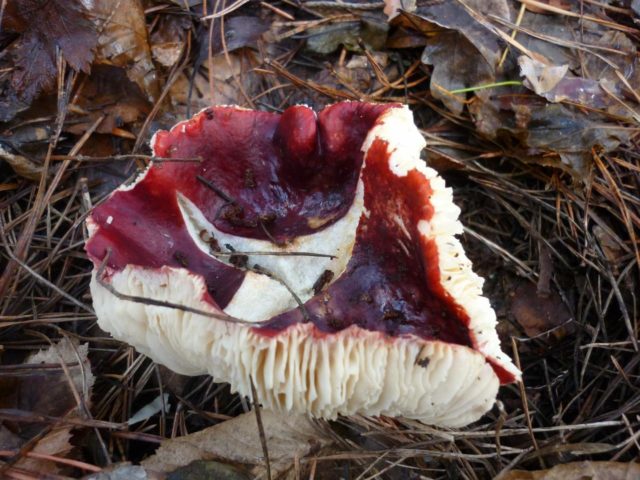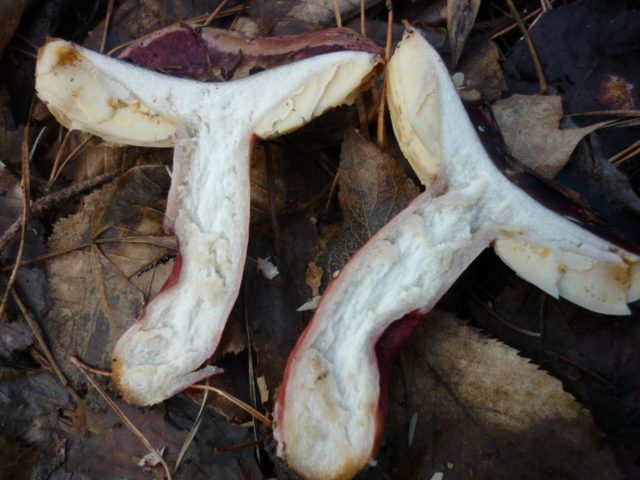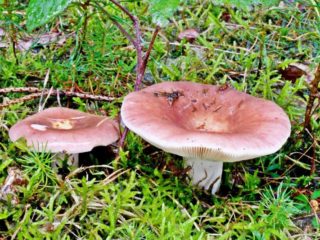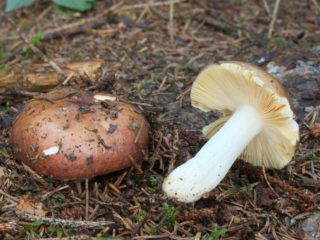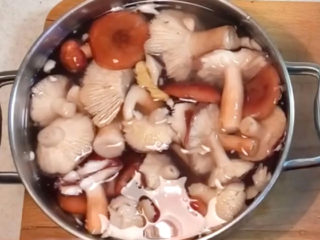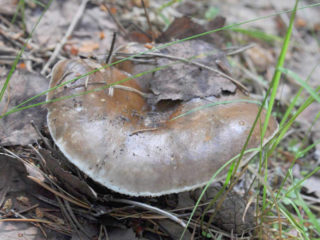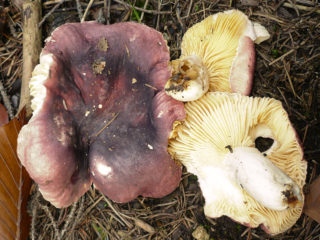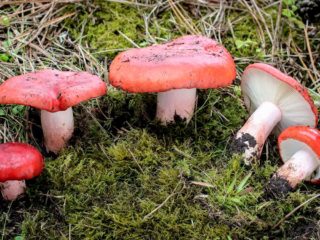Content
Russulas are the most common mushrooms; they can be found in forests throughout the Russian Federation. But among the many useful species, there are often inedible ones, for example, Kele russula.
Where do Kele russulas grow?
Russula Kele belongs to the Russula family. They grow mainly in deciduous forests, but are also found in mixed forests, where coniferous trees predominate. This species is most common in the northern hemisphere, and this is:
- European part of Russia.
- Crimea.
- Caucasus.
- Siberia.
- Central and Eastern Europe.
- North America.
Russula Kele is found only in nature and cannot be grown artificially. Often a mushroom clearing can be found in ravines, on the edges or in the thicket of a forest.It grows nearby with other mushrooms, not separately. That is why it can accidentally be mistaken for an edible mushroom.
Under natural conditions, Russula Kele begins to grow from mid-summer until late autumn. Even in October it can be found in the forests.
What do Kele russulas look like?
Russula Kele differs from other mushrooms of this species in having a purple cap, sometimes it turns purple, lilac or acquires a greenish color at the edges. The cap of the young Kele russula is very similar to an edible mushroom; it gradually becomes flat, and then its edges curl upward. The diameter of the cap is from 3 to 8 cm.
Russula Kele is a lamellar mushroom. Its plates at a young age are pure white, gradually acquiring a gray tint. The plates are located widely and grow tightly to the leg.
The stem of the inedible mushroom is cylindrical, painted in a rich pink-violet color. Its flesh is dense, smooth, slightly pubescent on the outside. The leg is brittle, dry, immediately turns yellow when cut, and the flesh inside is purple. The diameter of the leg is 2 cm, the height is no more than 3-8 cm.
Russula Kele does not have a pronounced aroma; fruity notes appear slightly. Its pulp is bitter and spoils the taste of all mushrooms if it gets into a dish.
Is it possible to eat Kele russula?
Russula Kele mushroom is not a poisonous mushroom of the 1st hazard class. But you shouldn’t eat it not only because of its bitter taste; there are known cases of poisoning. That is why Russula Kele is not classified as an edible mushroom.
How to distinguish Kele russula
You can distinguish the Kele Russula from other representatives of the species by its appearance.This variety belongs to the dark russula and never changes its color. Even a dry mushroom always retains its color and remains just as dark. The cap and leg have a purple tint, only the plates become slightly yellowish.
There are different ways to identify Kele's russula. However, you should not rely only on the description of the mushroom. Various sources say that it is difficult to clean, but in nature it may be different. This method does not guarantee that the mushroom found is 100% Kele's russula.
Symptoms of Kele Russula poisoning
You can get poisoned by Russula Kele, despite the fact that the mushroom is not considered poisonous. This can happen if it was collected in the wrong place. The fact is that russula plates absorb heavy metal salts, toxins and other harmful substances. You need to collect any mushrooms only in forests far from highways, factories and other industrial enterprises.
Symptoms of Kele russula poisoning may vary for each person, but most often boil down to a general malaise. The most common complaints during poisoning:
- nausea;
- vomit;
- abdominal pain;
- loose stools;
- increased body temperature;
- dizziness;
- loss of consciousness.
Nausea begins an hour after eating, can be independent or accompanied by vomiting. There are repeated attacks of vomiting, but the patient’s condition does not improve. Vomit contains pieces of undigested mushrooms, after which bile comes out. When poisoning with mushrooms, stomach pain is often observed. The person takes a forced position, as the pain gradually becomes unbearable.
Against the background of russula poisoning, Kele has loose stools.It can be one-time, but most often it is profuse - up to 15 times a day. This condition is life-threatening as it leads to rapid dehydration of the body.
The entire body reacts to intoxication, so body temperature is often elevated rather than normal. The higher it is, the stronger the poisoning. The patient must be taken to the medical care department immediately.
In case of severe poisoning, when a lot of Kele russula has been eaten, the following may be observed:
- cramps of the calf muscles;
- sticky cold sweat;
- rapid breathing;
- hard work of the heart;
- dizziness and loss of consciousness.
First aid for russula poisoning Kele
First aid is aimed at removing toxins from the body. It is aimed at gastric lavage, cleansing enemas, taking sorbent drugs and restoring hematopoiesis.
Gastric lavage begins as soon as the first symptoms of poisoning appear. No need to hesitate! If there is no vomiting, you must induce it yourself. To do this, drink a large amount of water or a weak solution of potassium permanganate. Then you need to press on the root of the tongue. You need to induce vomiting until the stomach is completely cleansed and only clean water comes out of it. This method can be used if the poisoned person is fully conscious. If a person is unconscious, then he is laid on his side, so that in case of spontaneous vomiting he does not choke on the masses.
If there is no diarrhea, then you can resort to cleansing enemas. To do this, use warm salted water. The procedures are repeated until complete cleansing.Liquid independent stool is also a cleansing of the body, so there is no need to take medications to stop it. This will only cause increased intoxication.
After cleansing procedures, you need to drink a sorbent solution. These may be the following drugs:
- "Enterosgel".
- "White coal".
- "Smecta".
- "Regidron".
If such drugs are not at hand, then regular activated carbon will do. It is taken in 10 pieces. at a time.
You can restore the water-salt balance of the body with the help of special preparations that are sold in every pharmacy, or with home remedies. You can drink herbal decoctions, sweet tea, rice water, and dried fruit soup. To bring down the temperature, regular antipyretics are suitable.
After poisoning, you should not eat food for 1-2 days so that the body can fully recover and the functioning of the gastrointestinal tract can improve. For the same purpose, you should not drink alcohol, otherwise the symptoms of intoxication will only intensify.
Conclusion
Russula Kele is a recognizable mushroom that is best not collected or eaten. Although in many sources it is not considered poisonous, it certainly cannot be classified as edible.
